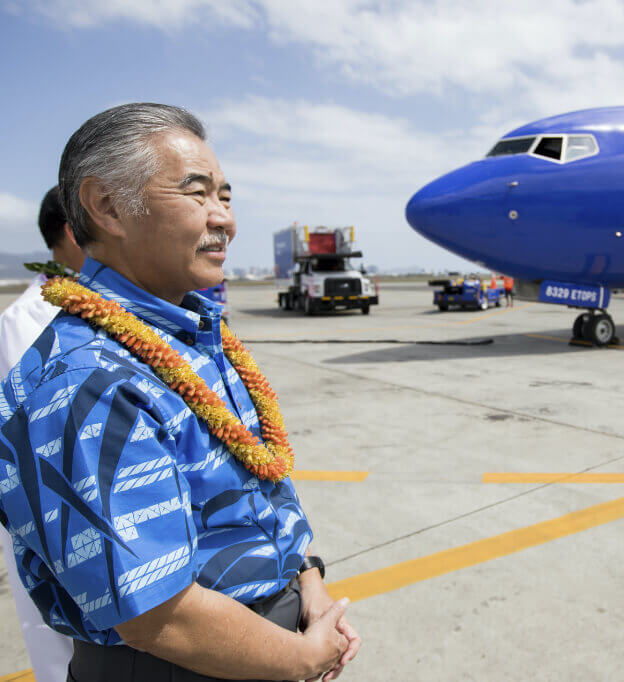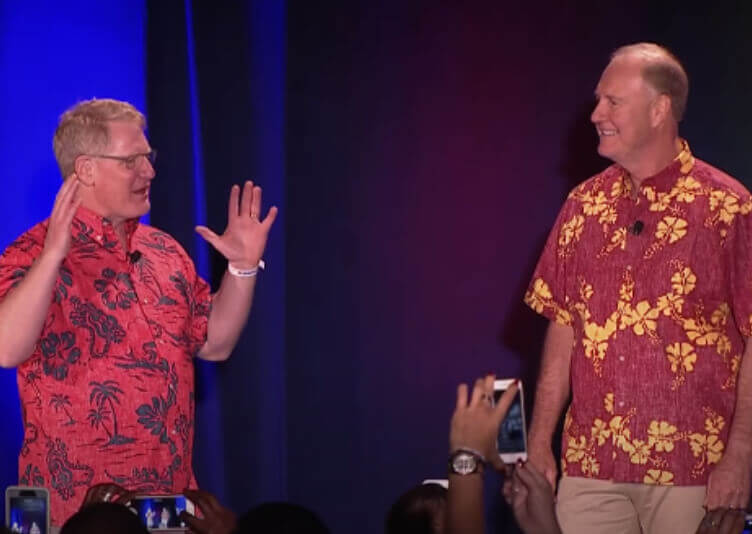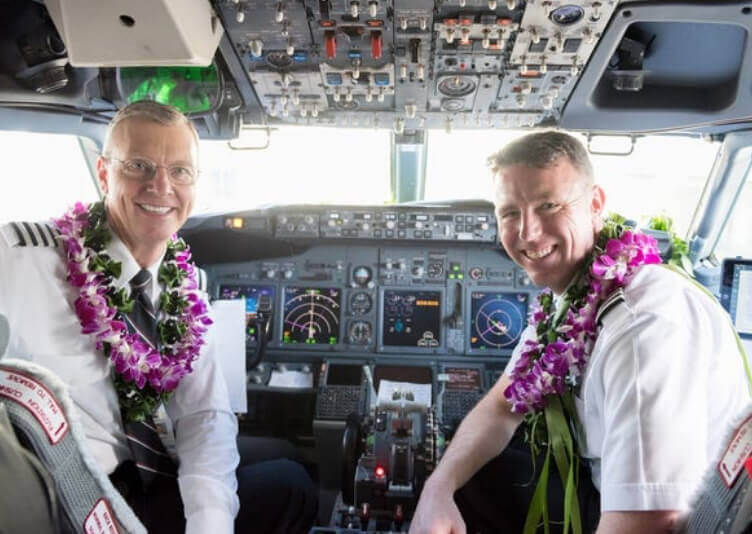
Hawaii Governor David Ige waits to welcome the first Southwest revenue flight to Honolulu.
Pure Aloha: Southwest Goes to Hawaii
It was the one question that refused to go away. Over the years, it had been asked so often by so many different people you’d have sworn Southwest Chairman and CEO Gary Kelly was caught in some kind of time loop. “Gary,” Employees and reporters would ask with an undercurrent of genuine hope in their voices, “will Southwest ever fly to Hawaii?”
For Gary, it was less a question of if Southwest would get to Hawaii, but rather when it would do so and how it could do so in the most strategic way possible.
The business rationale for expansion to the state of Hawaii was rock solid. Polling—especially in California, where Southwest was committed to holding on to its impressive market share—consistently ranked Hawaii as one of Southwest Customers’ most-desired destinations. Some Southwest Employees dreamed about using travel privileges to vacation there. Others hoped to move to the islands to be ambassadors for the famous Southwest Hospitality.
To earn its wings to fly to Hawaii, however, Southwest would need to attain ETOPS (Extended Operations) authorization from the FAA by thoroughly proving its proposed procedures.
ETOPS authorization is a set of standards to prepare a carrier for a multitude of extremely unlikely scenarios while flying routes that take a plane more than 60 minutes away from an airport capable of supporting a fully loaded commercial airliner. With this authorization, Southwest would be permitted to fly up to 180 minutes away from the nearest adequate airport.
Southwest had seriously considered applying for ETOPS authorization back in 2010 and 2011, but the push was ultimately halted due to the amount of work already underway to complete the acquisition of AirTran Airways. Despite all the initial research and work that had been completed, there was little doubt that years of added work would be required, especially when it came to flight planning, for Southwest to begin an ETOPS authorization process.
To start the planning with safety and efficiency top of mind, President Tom Nealon put together a cross-functional Team of flight planning and tech specialists, led by Senior Director of Regulatory Operations for Network Operations Control Steve Christl.
The Team decided to tackle this high-tech initiative in decidedly old-school fashion. They sequestered themselves with nothing but a whiteboard, markers, and their wits to guide the way.
It was an incredible collaboration. Lots of ideas. Lots of tech talk. And a whole lot of math. By chipping away at the puzzle, one marker stain after another, they devised a method of updating existing systems, rather than purchasing new technology.
Southwest Leadership acted quickly, organizing an offsite briefing in 2017 to discuss potential solutions. By the meeting’s close, the ETOPS Team had the full faith and support of the Company behind it.
Leadership had so much confidence, in fact, that Gary, Tom, and Chief Operations Officer Mike Van de Ven publicly announced to Employees via a live webcast from a Company Spirit Party at a Southern California theme park on October 11, 2017 –Southwest intended to serve Hawaii.

Clad in Aloha shirts on a live webcast, Mike Van de Ven and Gary Kelly reveal that Southwest is finally going to Hawaii.
Soon, an entire media ecosystem, including countless blogs and national headlines, sprouted up to document Southwest’s progress. Inside Southwest, there was complete alignment on the project. Flight plan systems were upgraded. Mechanics, Pilots, Dispatchers, and other Employees received special ETOPS training. Updated documentation was produced. And FAA tabletop exercises were successfully completed, paving the way for required validation flights.
Southwest had planned for just about everything—except a federal government shutdown. A budget impasse in Washington shuttered all federal agencies in December 2018, which brought the certification process to a screeching halt.
When the government reopened in late January 2019, Southwest rescheduled its validation flights and waited for a date from the FAA. When the date finally came, Southwest was ready.
The FAA’s in-air role-playing sessions were complex. With no Customers onboard, only necessary Crew and FAA officials, Southwest planes would be put through a series of simulated inflight crises to validate Crew response.
There were fabricated “depressurization” events, forced “emergency landings” at different airports, and even a simulated bird strike. Southwest Employees’ actions were carefully monitored and recorded during these simulations, which continued over 10 separate FAA test flights. At the end of the sessions, Southwest was confident that its preparation had paid off.
Word began spreading in February 2019 that Southwest was making progress in its ETOPS quest. Rivals couldn’t afford to wait for official confirmation. Their Customers were already acting as if Southwest was island-bound. Established carriers were forced to decrease their ticket prices as a wave of vacationers held off booking travel for the chance to fly Southwest to Hawaii.
The FAA formally approved the ETOPS authorization on February 27, 2019, and cleared Southwest’s expansion into Hawaii on March 17, 2019. Southwest had an Integration Team that had traveled multiple times to Hawaii beginning in 2017 to immerse themselves in local culture. The goal was to ensure Southwest appropriately and respectfully upheld the unique culture of Hawaii in its community engagement, promotions, and operations when it received ETOPS authorization.
The trip revealed how fervently many residents of Hawaii supported the expansion. They understood that Southwest interisland flights would apply much-needed price pressure on existing carriers. In addition, the bags fly free® policy (for first and second checked bags within certain weight and size limits) would allow locals to transport necessities and gifts across the chain of islands to family and friends—a welcome change to other carriers’ add-on luggage charges.

Captains Michael Styer and Rob Evers in the cockpit for the inaugural flight.
When Southwest’s inaugural flight to Hawaii departed from Oakland International Airport on March 17, 2019, it was given a proper sendoff. Customers were greeted with lei, and a respected cultural historian acted as Kahu (a revered caretaker of Hawaiian culture) and performed a ceremonial blessing of the aircraft, Crew, and Southwest spaces within the airport. Additional flights from California, as well as interisland service, soon followed. Media attention highlighted the immediate 17 percent industrywide decrease in fares to and from Hawaii as well as interisland to match Southwest.
The initial flights to Hawaii used 737-800s with ETOPS authorization, and Southwest now has experience in applying for authorization if the airline chooses to for other 737 series aircraft in the future.
As a result of these efforts, the number of inquiries about serving Hawaii have finally decreased, but in their place has come an equally exciting question: “Where is Southwest headed next?”
